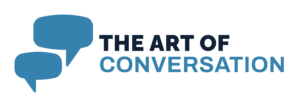Setbacks aren’t roadblocks; they’re course corrections. When things don’t go as planned, it’s easy to fall into frustration, but these moments hold lessons that smooth the way forward. Plenty of people who’ve reached great heights—athletes, entrepreneurs, artists—have stumbled, sometimes spectacularly. The difference is in how they respond. A setback isn’t the closing of a door; it’s a nudge toward a new, sometimes better, route.
Reframing the situation is key. Instead of viewing failure as proof of inadequacy, see it as evidence of boldness. If you’ve faced a setback, it means you took a risk, tried something, pushed beyond comfort. That alone is worth something. What didn’t work? What might work better? The most successful people aren’t the ones who avoid failure; they’re the ones who extract wisdom from it.
Think about Thomas Edison, whose experiments failed thousands of times before he landed on the right filament for the lightbulb. When asked how he handled so many failures, he famously said he hadn’t failed—he had just found thousands of ways that wouldn’t work. That mindset turns frustration into progress. Every misstep refines your understanding, sharpens your approach, and builds resilience.
Embracing setbacks as stepping stones requires a mental shift. Instead of dwelling on what went wrong, dissect it. Was it a lack of preparation, a faulty strategy, bad timing, or something outside of your control? Once you pinpoint the cause, you can make targeted adjustments. This isn’t about blind optimism; it’s about thoughtful evolution.
Motivation is often tested during setbacks, but those who push forward find a deeper, more lasting drive. Temporary failure weeds out half-hearted efforts. If you’re still determined after a few stumbles, that’s a sign that what you’re pursuing genuinely matters to you. It’s easy to stay motivated when things are going well. The real test—and the real growth—comes when things fall apart.
One way to use setbacks to fuel success is to develop a habit of reflection. Keep a journal of mistakes, lessons, and adjustments made along the way. Patterns will emerge, revealing strengths to build on and weak spots to address. It’s not about dwelling on failure but making it work for you.
Another powerful tactic is seeking out stories of others who’ve turned setbacks into comebacks. J.K. Rowling was rejected by multiple publishers before Harry Potter became a global phenomenon. Michael Jordan was cut from his high school basketball team. These aren’t just cliché tales of perseverance—they’re proof that a temporary failure doesn’t define your ultimate success. If anything, it fuels it.
Take action. Overthinking a failure often leads to paralysis. Instead of dwelling too long, make adjustments, test new approaches, and keep moving. Adaptation beats perfection. Forward motion, even in small steps, builds momentum—and momentum turns setbacks into stepping stones for success.
